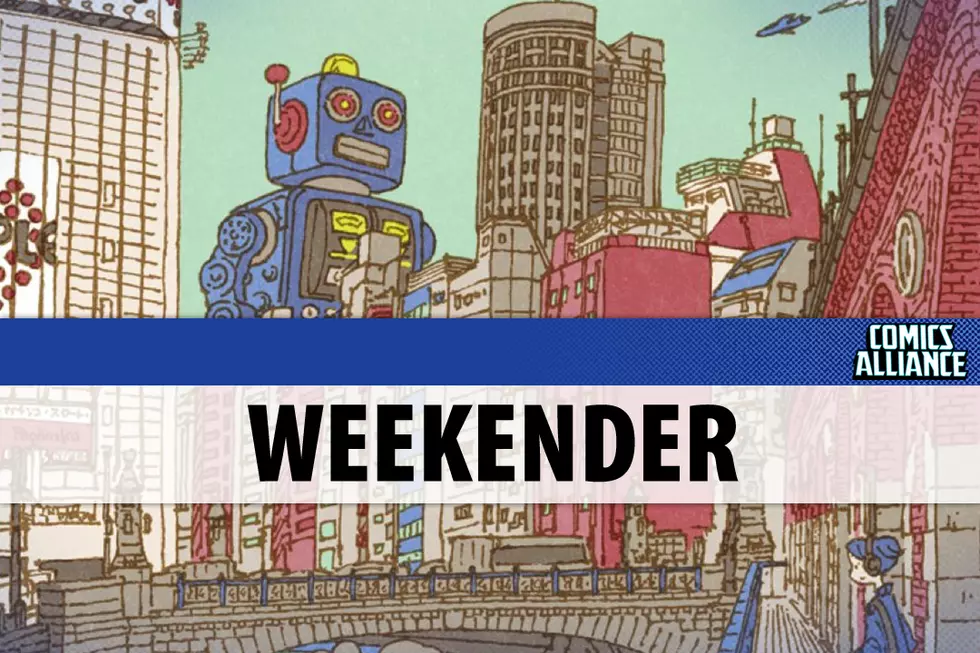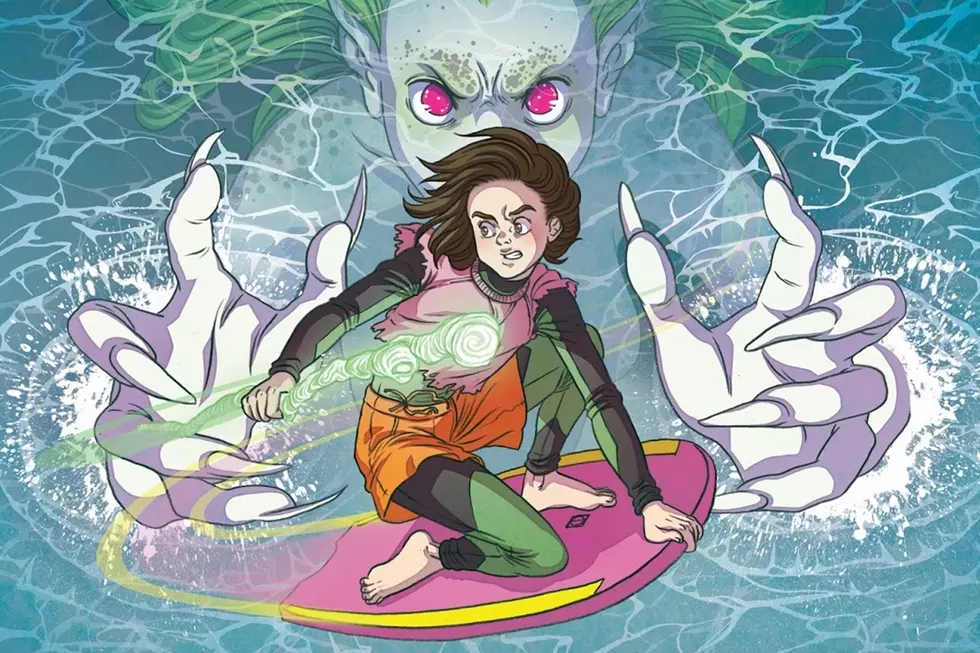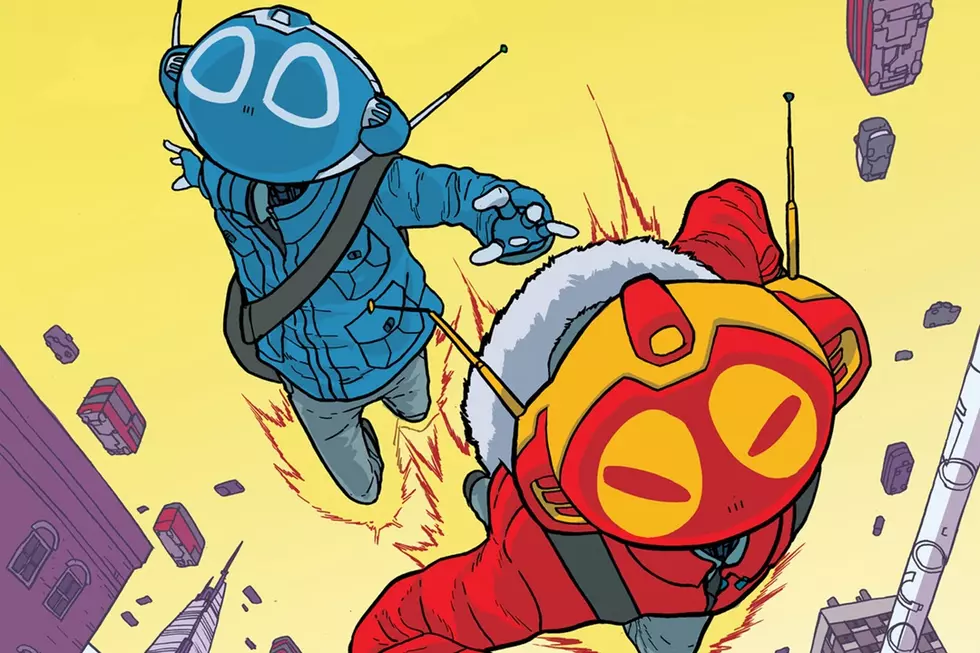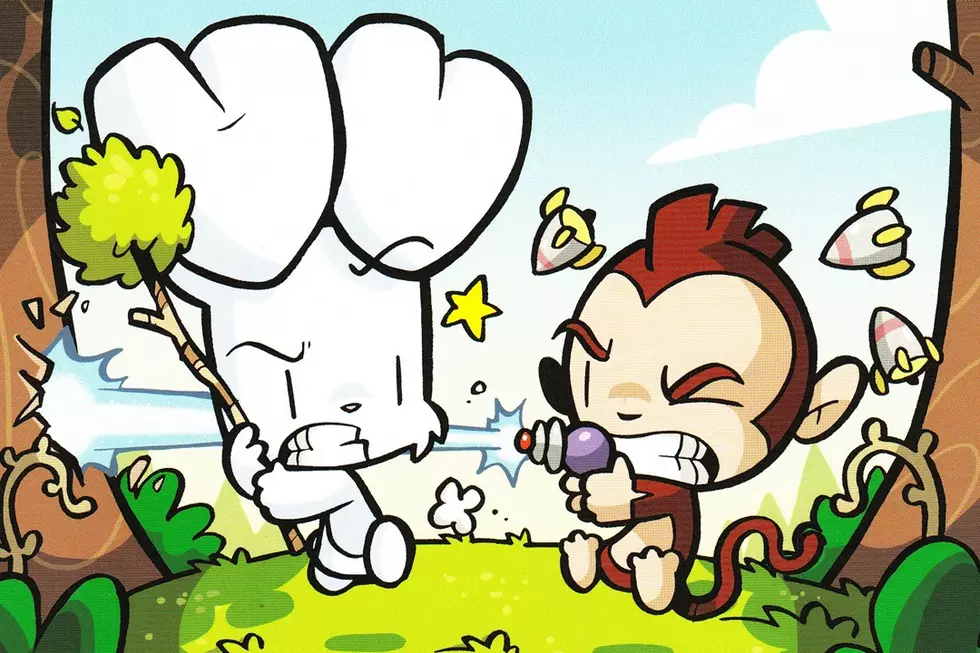
‘The Phoenix’ Is the Most Jam-Packed, Entertaining Comic You’ve Never Heard Of

On the Comics Internet, every week brings a new announcement of a bold new direction, or a cryptic teaser for the next big event. But with all that promotion, it might come as a surprise that the comic I'm most excited about for 2012 is one most American readers have probably never heard of. It's called The Phoenix a weekly anthology for kids that has some of the most fun and innovative comics on the stands. The catch? It's only on sale in the UK.Fortunately for me, I've got a pal over in Merrie Olde England -- Black Library novelist Josh Reynolds -- who was willing to get a subscription and send and send me a transatlantic care package every month. It's a pretty complex arrangement, but considering how much I've been looking forward to the Phoenix since it was announced, it was worth it.
The reason I was so excited was that the lead story in every issue is Daniel Hartwell and Neill Cameron's Pirates of Pangaea, the story of a time-lost land in 1717 that's been colonized by ruthless buccaneers who mount their ships on the backs of dinosaurs:

Cameron's been a favorite of mine for a while thanks to Mo-Bot High, his amazing graphic novel about schoolgirls fighting each other with giant robots that were summoned into being by their cell phones, but what he and Hartwell are doing with Pirates is even better. They've taken the classic adventure story setup of the proper lady beset by pirates in a strange new world and added in beautiful, grand-scale scenes of dinosaur-pirate-ship combat and narrow escapes on the back of a Brachiosaurus.
His art here is some of the best he's ever done, with massive magazine-sized pages fit the scope of the action perfectly. There are parts where it gets downright breathtaking, right down to the coloring that sees a beautiful sunset take place over the span of four issues. But beyond that, it's just solid comic book storytelling. The way that they're able to build to a genuinely thrilling cliffhanger every week with only four pages to work with is incredible; Hartwell's script is really a master class on serial storytelling, cramming action and character and new ideas into an impossibly short space and making it look easy.
In addition to Pirates, Cameron also illustrates a really fun strip called How To Make (Awesome) Comics, which is exactly what it sounds like. All the standard lessons that we've all seen in other places are still here (I think the one about how you can draw anything if you start out with circles is required by law), along with Cameron's tried, true and tongue-in-cheek assertion that the way to make something awesome is to start with two things you like and combine them (like, say, schoolgirls + robots, or pirates + dinosaurs, or Santa + whatever). More than that, it's how he breaks down essential concepts like the three-act plot structure in a way that's fun and engaging:

Mark my words, Fatty McDonuts the Murdering Penguin is going to go down as the Sensational Character Find of 2012. At least in British kids' comics.
But five great pages can't carry an entire magazine, which is why it's a good thing that the rest of the Phoenix is a pretty solid read as well. As for what's in there, well, I hate to use the word "quirky," but that's really the only way to describe it. The creators of the Phoenix are taking full advantage of the anthology format to go wild with the kinds of stories they're presenting.
A few of them are exactly what you'd expect out a kids' comic, like Jamie Smart's gag-oriented Bunny vs. Monkey, about an astronaut test monkey who crash-lands in a forest and immediately sets about annoying his neighbors, and Kate Brown's absolutely gorgeous storybook-style The Lost Boy. There's even a text piece in every issue, ranging from original ghost stories to novel excerpts to illustrated adaptations of myths like Theseus and the Minotaur:

Once you get past those, things get even more offbeat. Rather than just doing a hidden-picture puzzle, for instance, Blimpville gives you a new picture every week of "the world's most accident-prone town," where a shot from the same angle each week shows things getting progressively more chaotic. And then there's the Ehtherington Brothers' Long Gone Don, a strip about a ten year-old boy who dies(!) and then has to make his way back from a surrealist afterlife where he's in danger from a rain of gigantic kitchen knives alongside a foulmouthed crow.
That one's pretty weird.
My favorite by far, though, is Adam Murphy's Corpse Talk.

It's basically a talk show for corpses, where Murphy is joined by the dessicated body of a noted historical figure every week for a pretty entertaining look at their life story. What's great about it, though, is that so far, he's picked exactly the kind of people that kids (and, you know, 29-year-old comics critics) love to read about. He covers pirates like Anne Bonny, scientists like Marie Curie (who gets the best punchline) and Nikola Tesla, conquerers like Genghis Khan, and he doesn't shy away from those gory details that kids love.
His strip on Joan of Arc even ends with the story about how Joan was burned at the stake at the age of 19, and the punchline is that Murphy's crying too hard at how sad it is to make his customary joke. It sounds grim -- and it is -- but it's actually pretty hilarious, too, especially when St. Joan's corpse reaches over to pat him on the head and say "It's okay, you still need a joke for the end of your comic" before offering up an awful pun of her own. It's a perfect example of an educational comic that succeeds by presenting fascinating information without talking down to his audience.
 There's also a puzzle strip at the end of every issue about an Indiana Jones type that fills me with nostalgia for those Usborne Puzzle Adventure books that I had when I was a kid, plus one-shot strips, plus interviews with the creators -- it's jam-packed. Each issue actually feels longer than 30 pages, which is a testament to how much they manage to fit in.
There's also a puzzle strip at the end of every issue about an Indiana Jones type that fills me with nostalgia for those Usborne Puzzle Adventure books that I had when I was a kid, plus one-shot strips, plus interviews with the creators -- it's jam-packed. Each issue actually feels longer than 30 pages, which is a testament to how much they manage to fit in.
Subscribers also get access to a section of their site called the Time Machine where they can read every installment of the serials like Pirates of Pangaea, making it the easiest comic in the world to jump on if you like what you read. Unless, of course, you're 3,000 miles away from your nearest Waitrose, I mean.
So for those of us here in America, there's good news and bad news. The good news is that if you call up the number on the Phoenix website, they will set you up with an international subscription. The bad news is that getting a comic book shipped across an ocean every week isn't really feasible unless you've got the kind of money that it takes to, say, protect Gotham City from homicidal clowns.
I sincerely hope that changes, and that they go digital in a way that will bring this comic to a worldwide audience, because it's too good not to have one. It's a great example of what you can do with all ages comics, and it's exactly the kind of book that could easily spark a life-long love of the medium. So if you're in the UK, pick it up and give it a read.
And if you're not, well, do what I did and start calling in favors. It's worth it.
More From ComicsAlliance









